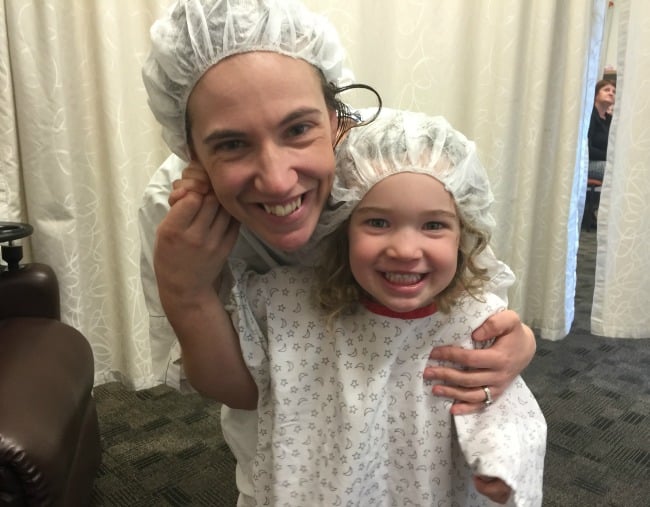
For a mum, they were the the words that set every alarm bell ringing: “Your two-year-old is waking up during nap time literally gasping for air.'”
Although I had noticed Addi was snoring when she slept at home, I hadn’t realised the severity of it or that it wasn’t normal, until the childcare worker made the observation.
I quickly got a referral from a GP to Dr Mark Guirguis an Ear, Nose and Throat specialist. He took one look inside Addi’s mouth and said, “They will need to come out.” Dr. Guirguis explained that Addi needed to have her tonsils and adenoids removed because their large size was obstructing her breathing, which presented itself mostly while she was asleep, and is often the case in younger children.




Top Comments
My daughter had tonsils, adenoids & massive scraping of the nasal lining (dits & outs I think it's called)
She was 4.5 & it was the best thing we ever did - she had constant ear infections, snored & gasped in her sleep.
We were positive & made it exciting for her & she was fantastic! She woke up a bit groggy & that was scary for me. She asked for food, when back in her room, straight away (had toast apparently good to keep the wound from scabing?), she & I spent the night there & went home the next day. Her recovery was instant but she does have a high pain tolerance!
Both kids have had theirs removed and both kids recovered very differently to each other - one had a bit of a vomit in the hours afterwards (bringing up the blood etc that had gone into their stomach while being operated on) and was bright as a button and happy from that point on. The other child didn't do this and felt a bit off in the stomach, but both were really good by about day 2 or 3.
The important bit though is that both kids were FAR better off after they had their tonsils removed. They had been experiencing tonsillitis, and upper respiratory infections far too often, and after they had them removed they were so much healthier for it! I don't regret them having the operations for a second.
We had the book 'goodbye tonsils' (very old book a friend recommended - you'd probably find it on Abe books). Both kids also a new stuffed toy waiting for them after their surgeries (yay for bribery!). After giving them some advance warning about hospital etc we just downplayed the whole thing as much as possible so that they wouldn't be concerned. We were able to be with them the whole time in hospital too (slept next to them on foldouts) so it wasn't as scary as it might have been in the old days.